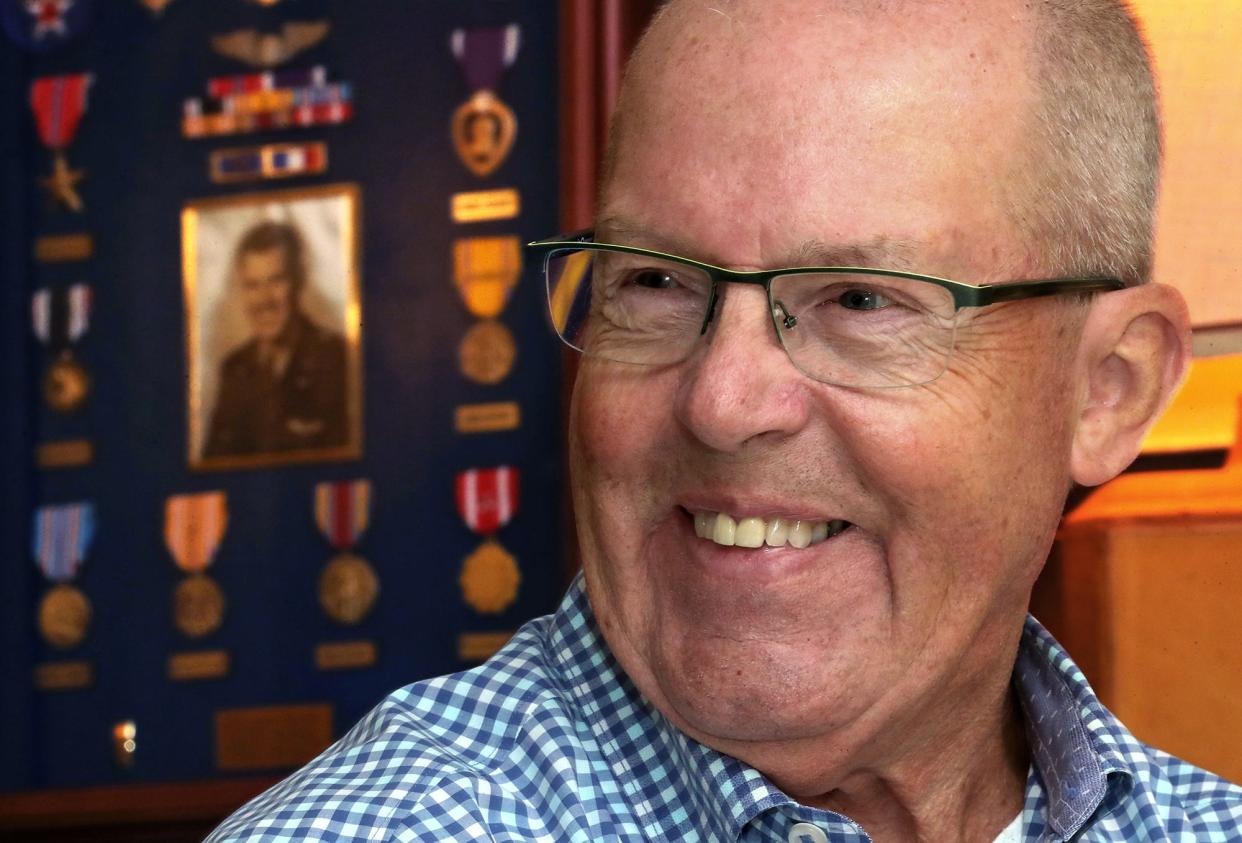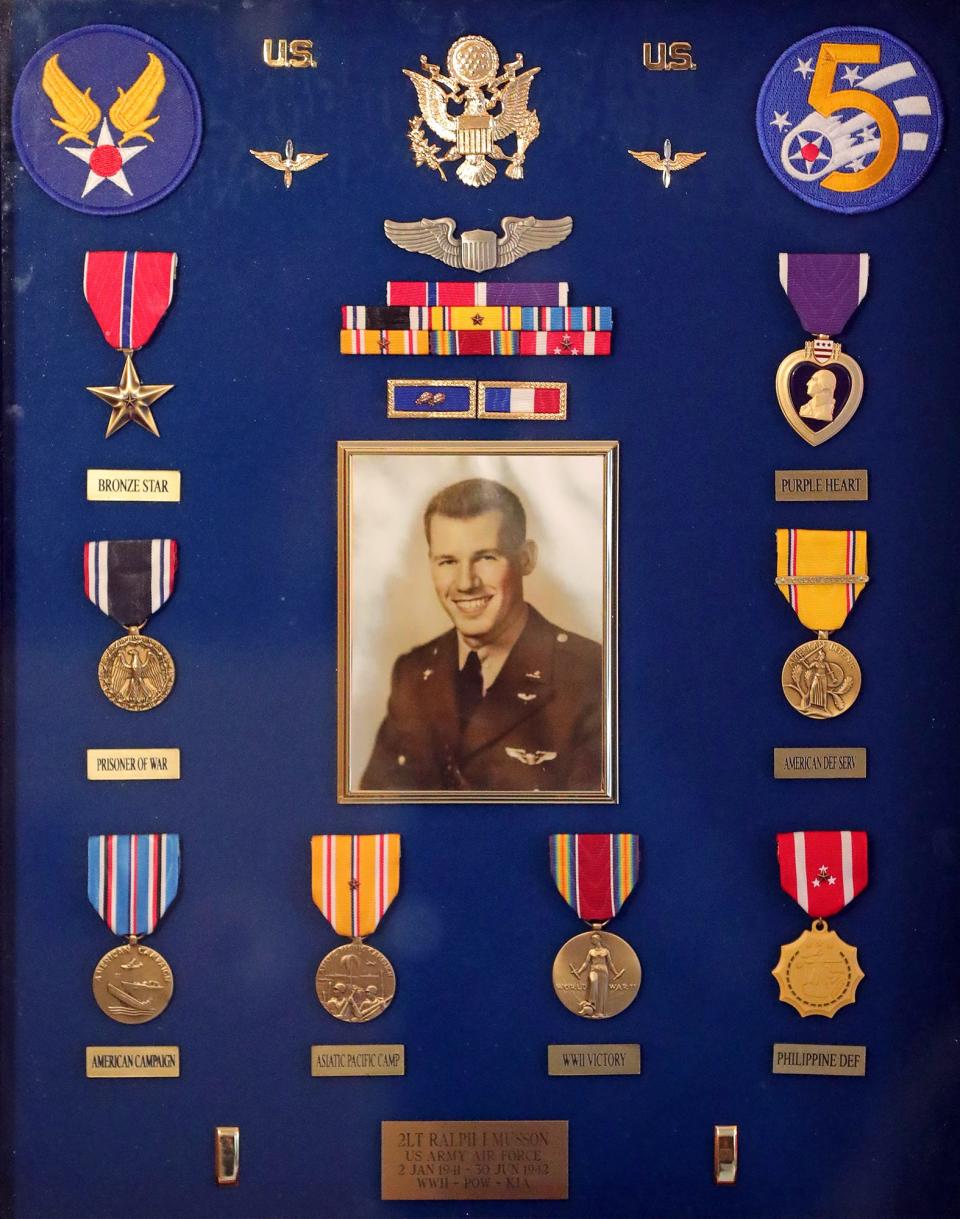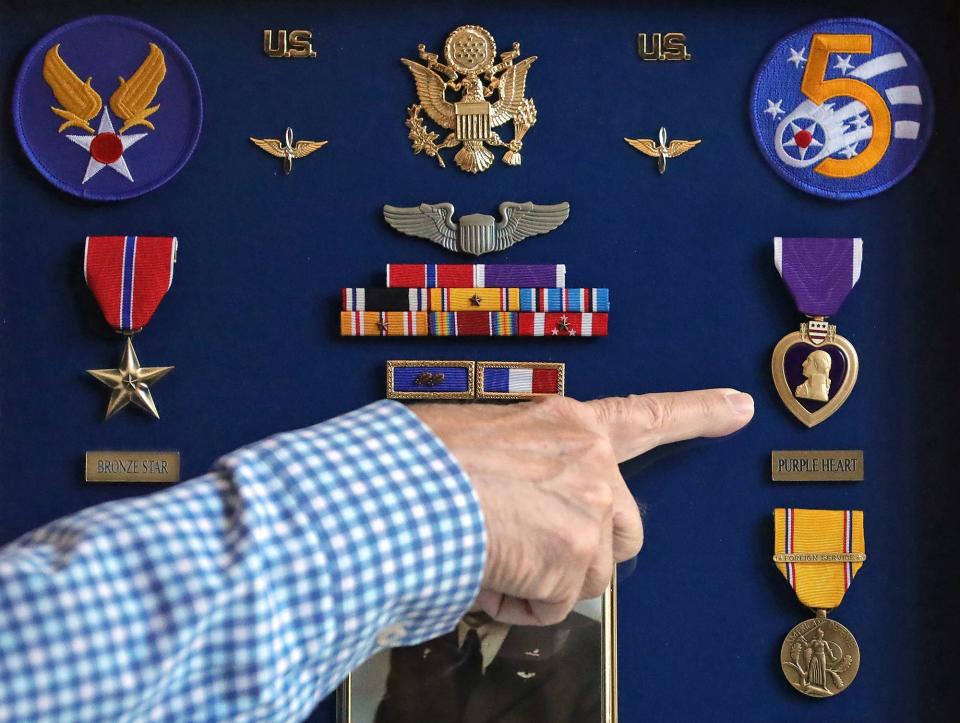Akron veteran seeks answers in WWII death of a relative he never knew

Ralph Musson survived the Bataan Death March in the Philippines 80 years ago this April, enduring the brutal trek as hundreds of his fellow soldiers perished along the way.
Akron relative Jay Musson knows that much about the relative he never met. He also knows his cousin twice removed died later in a prison camp, succumbing to malaria on June 30, 1942.
It's a slice of family history Jay Musson learned by chance, all because of a call out of the blue two years ago, requesting his DNA to help identify Ralph Musson’s remains.
“An Army contract genealogist was looking for live DNA (from) relatives,” Musson said in a recent interview.
The phone call set in motion a continuing search for his relative’s story.
Along the way, Musson uncovered Ralph Musson’s deep Akron ties in the years before his death in the Cabanatuan Prisoner of War Camp, where a young pilot with a love of music was tossed in a common grave with others who died in the camp.

Jay Musson’s DNA sample and two others collected from Massachusetts relatives of Ralph Musson led to what are believed to be the WWII soldier’s remains being sent to Hawaii. There, the military’s top DNA detectives will work to positively identify the set.
As the 80th anniversary of his relative’s death approaches, Musson hopes the relocation will lead to Ralph Musson’s remains being verified, allowing him to be buried at Arlington National Cemetery in Virginia.
“It’s an absolutely heartbreaking story of what happened to him,” Musson said.
Before the war
Ralph Musson’s father lived in Mogadore and attended the University of Akron before moving to Massachusetts for medical school. His aunt, however, remained in Akron.
In the summers, Ralph Musson and his sister would stay with their aunt in Akron, taking trips with her and occasionally appearing on the society pages of local newspapers. One year, Musson said, she took her nephew to Europe.
“Ralph was raised in a musical family,” Musson said.
He went on to study music at Oberlin Conservatory of Music at Oberlin College, but world events were out of tune with his college goals and he was drawn into the conflict that became World War II.
As tensions between Japan and the U.S. intensified, Ralph Musson put aside his musical ambitions. When Japan bombed Pearl Harbor and the U.S. entered World War II, he was stationed in the Philippines, less than 2,000 miles from the the land of the Rising Sun.
A pilot and an infantryman
Military records show that 2nd Lt. Ralph Musson entered the military on Dec. 30, 1940.
“He went into the (military) to fly planes,” Musson said. “He went to train as a dive-bomber pilot.”
The young pilot was sent to the Philippines and stationed on Luzon, the nation's largest and most populous island, as part of a buildup of forces as war tensions grew. When war came after the Dec. 7 attack on Pearl Harbor, the Japanese turned their attention to Luzon.
But the U.S. and Filipino forces were unprepared. Planes hadn’t been delivered to airmen on the island, and when a ground assault began on Dec. 22, the pilots became infantry.
“They knew the Philippines was going to fall, so they diverted (the) planes to Australia,” Musson said. “He was screwed.”
Ralph Musson and the 12,000 U.S and 63,000 Filipino soldiers were ordered by Gen. Douglas MacArthur to retreat to the Bataan Peninsula, and a long battle raged from Jan. 7 to April 9. The surrender of the U.S.-led force was the largest since the Civil War — and the 60-mile Bataan Death March began, with hundreds of U.S. troops and thousands of Filipino POWs dying along the way.
“They got up against the sea and they all surrendered,” Musson said. “The Japanese felt that these Americans and Filipinos were all cowards who deserved to die. That’s why they didn’t have any food, they didn’t have any water.”
Ralph Musson survived the infamous march, but at Camp Cabanatuan, he contracted malaria. The enemy was not concerned with American burial practices or traditions.
“They’d (bury) 30 guys in a hole,” Musson said.
Attempts to identify a soldier from the past
Efforts to identify Ralph Musson’s remains are similar those made to successfully confirm the remains of a Barberton sailor, Buford Dyer.
Dyer was on board the USS Oklahoma when it was attacked in Pearl Harbor, and it wasn’t until last year that his remains were identified using DNA technology. Previous attempts ended with Dyer’s remains being classified as unrecoverable.

For Ralph Musson, the process has been similar, with initial efforts to identify his remains ending more than 70 years ago.
The Defense POW/MIA Accounting Agency, however, has been using DNA to successfully identify hundreds of individuals killed in action and is conducting an ongoing project to evaluate evidence related to Cabanatuan POW cases.
When Musson sent his DNA swab to investigators, it helped satisfy requirements for a disinterment of remains. The process was approved Sept. 15, and the remains were sent to Hawaii.
Musson expects another wait before he and Ralph Musson’s other relatives learn if military experts can identify the young pilot’s remains. The answer will be one more piece of the 80-year-old mystery and help preserve Ralph Musson’s legacy. His relatives in Massachusetts, like Musson, knew little about him before the process began.
“They said they saw his pictures at Ralph’s mother’s house,” he said. There was a picture of him on the wall, and that’s about all they knew.”
‘What I always worried about’
Musson said he feels a deep connection to the relative he never met.
The Akron resident was drafted in 1966, went on active duty in February 1967, and was sent to Vietnam on April 1, 1968.
He saw heavy fighting in the Mekong Valley, the location of some of most brutal fighting in the war. Jay Musson was injured in the knee and was awarded a Purple Heart. He said he suffered more long-term damage from post-traumatic stress disorder than his injury.
His license plate, a half-century later, reads “SHOT4U.”
With the advent of the coronavirus pandemic, Musson began delving into his family history and uncovering at least 20 family members who served in the U.S. military. The roots run back to the French and Indian War, before there was a United States, and the Revolutionary War.
But Ralph Musson’s case has consumed him the most, Musson said.
“What I always worried about happening to me happened to him,” Musson said.
Leave a message for Alan Ashworth at 330-996-3859 or email him at aashworth@gannett.com. Follow him on Twitter at @newsalanbeaconj.
This article originally appeared on Akron Beacon Journal: Akron veteran seeks answers in WWII death of a relative he never knew

